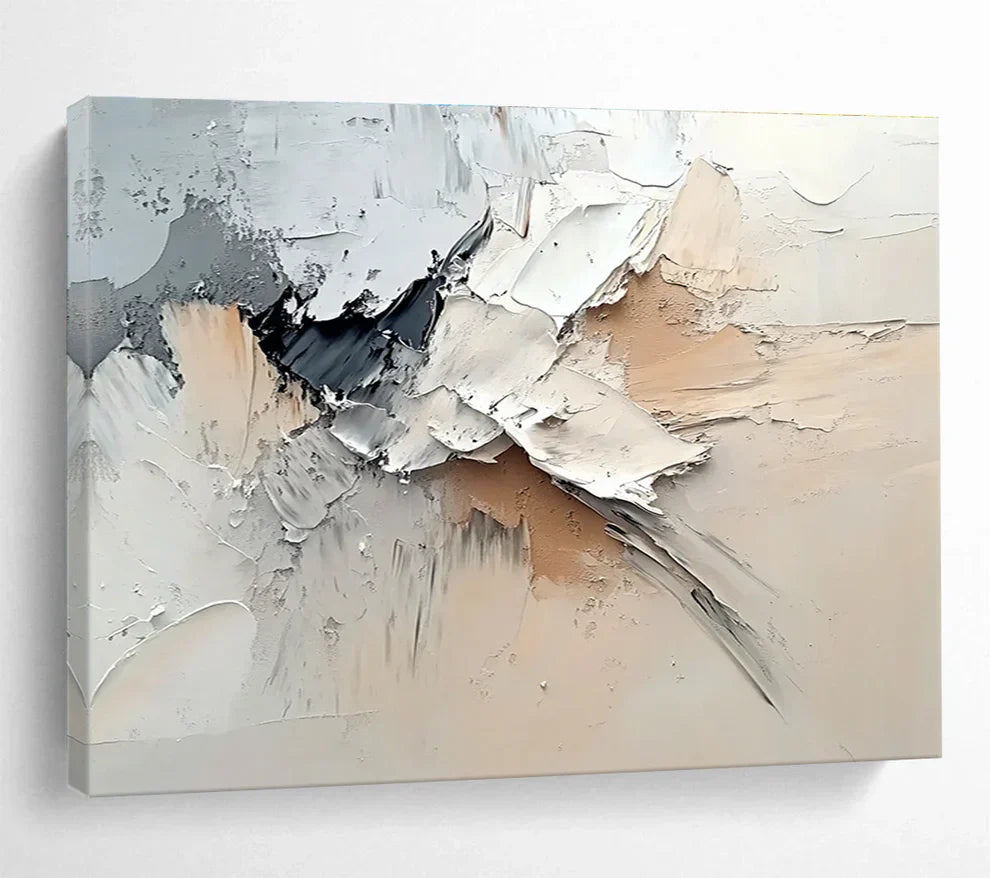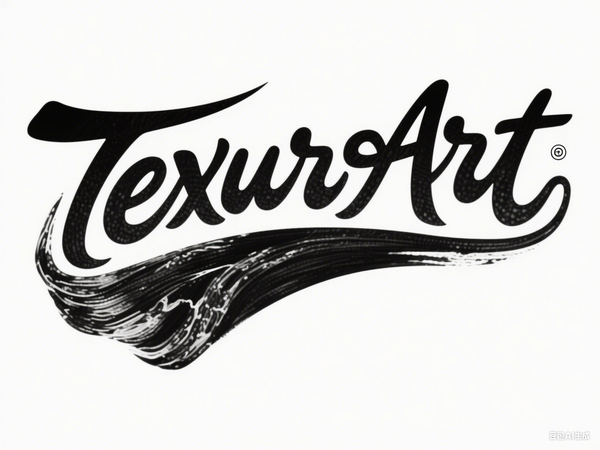
Sculpted Light - A Study in Tonal Abstraction and Texture
Share
This striking abstract painting is a masterwork of minimalism and texture. It forgoes vibrant colors in favor of a sophisticated, monochromatic palette of whites, grays, and soft beiges. The artist's focus is on the physical application of the paint, creating a three-dimensional, almost sculptural surface that is the central subject of the piece.
The composition is built from a dynamic arrangement of thick, gestural strokes of paint. The artist has used an impasto technique to great effect, with chunky, knife-like applications that jut out from the canvas. These sculpted forms create a central, explosive shape that appears to be erupting from the center of the canvas. The colors, a subtle mix of white, light gray, and hints of warm beige, provide a sense of calm and elegance. The interplay of light and shadow on these raised surfaces is what gives the painting its life; the forms appear to shift and change depending on the viewing angle and the light in the room.

The power of this piece lies in its quiet strength. It does not demand attention with bold color but captivates with its delicate complexity and tactile nature. The visible lines and scrapes in the paint show the hand of the artist, giving the work a raw, authentic feel. This painting, a 3D White Abstract Art for Modern Art Museum & Minimalist Corporate Office SC135, is a perfect example of how form and texture can be the primary language of artistic expression, a trend often seen in sophisticated contemporary art.
The Artist's Philosophy: The Essence of Form and Light
The creative philosophy behind this painting appears to be rooted in the belief that art can be a form of pure aesthetic experience, unburdened by narrative or representational demands. The artist is interested in the fundamental elements of painting—texture, light, and form—and how they can create a powerful emotional response on their own. This approach aligns with the core tenets of Abstract Expressionism and minimalism, which prioritized the physical act of creation and the raw materials of the work. As explored in publications like the Tate's guide to Abstract Expressionism, many artists have used a limited palette to force the viewer to focus on the subtleties of the composition and the artist's unique hand.
The journey to this style likely involved a deep dive into the properties of paint and a desire to create a work that was more of an object than an image. The deliberate choice to work in a monochromatic palette is a bold one, showcasing an artist who is confident in their ability to create drama and beauty without relying on color. This work is a perfect addition to a gallery of Bedroom Wall Art, where its calming and sophisticated palette can create a serene atmosphere. For further insight into the use of texture in contemporary art, the archives of the Museum of Modern Art (MoMA) offer excellent examples of how artists use tactile surfaces to engage the viewer on a deeper level.

What Our Customers Are Saying
"This painting is an absolute showstopper in my living room," says Michael P. from New York. "The textures are incredible, and it adds a touch of modern elegance to my space. It looks even more expensive in person."
"I was looking for a minimalist piece that still had personality," shared Clara D. from California. "The light and shadows on this piece are constantly changing, which makes it so dynamic. It's a truly beautiful work of art."
"The quality is excellent, and it arrived in perfect condition," commented David R. "The painting is a focal point in my home. I get compliments on it all the time."
Frequently Asked Questions (FAQ)
Q: Is this painting a canvas print or a hand-painted piece? A: This artwork is a high-quality canvas print that expertly reproduces the subtle colors and rich, textured strokes of the original abstract painting.
Q: How do I clean and maintain this artwork? A: To maintain the painting, gently dust the surface with a soft, dry cloth. Avoid using any water or cleaning solutions, as they may damage the print.
Q: Does the painting come with a frame? A: Yes, the canvas is professionally stretched over a sturdy wooden frame and is ready to hang, so no additional framing is needed.
Q: What is the best way to light this painting? A: Given its three-dimensional nature, this painting looks best under direct light, such as a picture light or track lighting, which will highlight the sculptural texture and create dynamic shadows.
